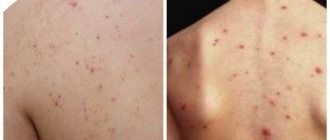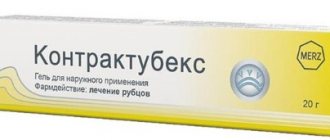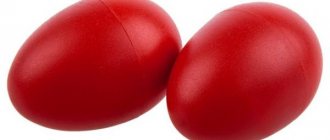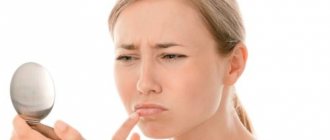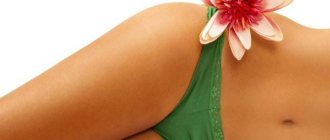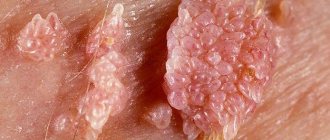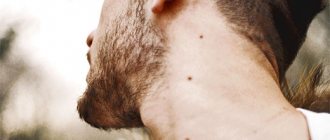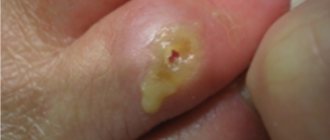Types of rashes on the legs
Skin is the outer covering of the human body; it efficiently performs its protective functions. The epidermis is considered the largest organ that takes the blow from the external harmful environment, so it needs proper care.
Unfortunately, it is not always possible to keep the skin in excellent condition and unpleasant acne appears on the legs.
They not only spoil the aesthetic, but can also be accompanied by unpleasant symptoms: itching, burning, redness.
The most common types of pimples that appear on the legs are:
- small red pimples;
- white and hard to the touch;
- watery;
- reddish spots;
- inflamed pimples, large in size.
Acne appears in both girls and men. There are many reasons for the occurrence of such an unpleasant pathology. Whatever it is, the rash cannot be ignored. Even if an unpleasant discovery was discovered in winter, it must be eliminated.
Typically, pimples are accompanied by itching, during which they are scratched.
An infection can be introduced into the skin, causing an inflammatory process.
If you do not pay attention to the problem, then after healing, scars may remain on the legs, which significantly spoils the appearance.
There are many reasons for the appearance of acne, so it is important to determine the source of the disease and then begin treatment.
What are such formations?
There are several varieties of such ulcers. It is important to take into account what the pustules look like, because this determines what should be done with them next.
Here are the types of rashes that occur:
- small - pustules are usually grouped. They are not necessarily elevated; sometimes the rashes are at the level of the skin. If this is the latter case, the ulcers are colored red and are (relatively) empty. If the formations are elevated, then they are filled with liquid inside.
- Red pimples on legs are not filled in. These flat formations, however, eventually develop a yellow-white head. Such abscesses are large. Hence the discomfort, for example, when wearing tight clothing.
- White formations are papules. The contents of these are white, hence the color of the entire abscess. The peculiarity is that they are located at a great distance from each other. They vary in size: there are both large and small.
- Solid formations are nodules. If you carefully feel the knot, it will seem dense. Color, size and fullness vary. For example, there are also empty formations. This problem cannot be cured quickly.
- Dry rashes are usually grouped and are not large in themselves. Empty. Rough and dry. It is important to be careful, because these formations can easily be accidentally picked off, and this is sometimes fraught.
Reasons for appearance
The skin is exposed to a variety of negative environmental influences.
It is not always able to quickly and efficiently protect the body; sometimes it fails and acne appears.
They must be dealt with in the early stages to avoid complications.
If acne appears on the thighs, the causes of this disease are common. The main sources of unpleasant consequences will be presented below.
Photo
Diseases
Among the main ailments, it is worth highlighting three possible options:
- dyshidrotic eczema appears when the skin comes into contact with chemicals such as soap, washing powder and others. Pimples appear on the inside of the legs or palms in the form of small blisters that eventually burst and release fluid. The disease is often accompanied by an increase in body temperature;
- Dyshidrosis appears during a hot period of time, when the body is subject to excessive sweating. Pimples look like red blisters and can appear on both the legs and arms;
- itchy dermatitis, usually appears on the feet. The rash looks like red blisters and is accompanied by itching and burning. The cause of this unpleasant disease is the use of antibiotics, exposure to household chemicals, and uncomfortable and tight shoes, in which the feet become very swollen.
As a result of a cold
Most often in the autumn-spring period, the body is greatly weakened due to chronic diseases, various viruses and colds.
All these factors significantly reduce immunity in both adults and children, which causes pimples not only on the legs, but also on other parts of the body.
- The rash may be accompanied by itching and burning.
- If purulent pimples appear, this indicates a weakened immune system, which urgently needs to be restored.
Allergy
Allergic acne is accompanied by redness and severe itching.
Photo: manifestation of an allergic reaction
A person scratches them and causes an infection, which causes suppuration.
With such a problem, you need to contact a dermatologist.
The doctor will be able to determine the disease, the cause of its occurrence and prescribe the correct therapy.
Etiology
Skin is a large human organ that is in constant contact with environmental agents. The result of most of these influences is the appearance of rashes and other skin reactions.
The main reasons for the development of acne in the thigh area are the following factors:
- Using incorrectly selected underwear and clothing. Synthetic fabrics have the ability to limit the flow of air to the skin, which causes a greenhouse effect and is the best environment for the proliferation of microorganisms. This also includes incorrectly selected clothing sizes, which increases friction between the fabric and the skin.
- Shaving the lower extremities is one of the main causes of rashes in females, which arise as a result of violating the rules of hair removal.
- Allergic reactions. Often combined with other manifestations, allowing the condition to be differentiated.
- Genital herpes is an infectious viral disease that occurs through direct contact or household infection.
- Taking steroid drugs. This reason is typical for men trying to increase their muscle mass with anabolic drugs.
- Hormonal imbalance during pregnancy, puberty, thyroid diseases.
- Disturbances of the microflora of the gastrointestinal tract (dysbacteriosis).
How to recognize types of rashes
The most common types of acne that appear on the thighs are:
- pinpoint red rash;
- white solid elements;
- rashes with watery contents;
- red carpets;
- single inflamed pimples of large size.
The type of rash will allow the dermatologist to differentiate the condition and determine the root cause of the problem.
Small red elements are a manifestation of contact dermatitis, herpes virus infection, insect bites (fleas, lice). If such rashes are accompanied by accompanying symptoms, this may be evidence of an infectious viral disease (measles, rubella).
With bark, pathological elements appear a few days after the onset of the disease. First, the rash appears on the scalp, face, and behind the ears. Accompanied by hoarseness, fever, fear of light, runny nose, headaches.
Rubella is characterized by rapid spread of rashes throughout the body. The formations have a round or oval shape, do not rise above the skin, and do not have the property of merging with each other.
Rubella
White, hard pimples - milia - are a consequence of blockage of the sebaceous glands. They are not squeezed out without puncturing the skin. They look like separate elements and do not merge.
Watery pimples can be a symptom of the following conditions:
- allergic reactions;
- chicken pox;
- scabies;
- herpetic infection;
- cold.
Allergic rashes are accompanied by skin hyperemia, itching, and peeling. Chickenpox is characterized by the spread of elements throughout the body. Pimples with scabies are very itchy, especially in the evening and at night. Inspection of the area allows you to determine the presence of subcutaneous scabies (in the form of slightly pink or grayish stripes) with two exits at the ends in the form of more obvious points.
Treatment
Treatment for acne depends entirely on the cause of its appearance.
In any case, you can initially try to get rid of the unpleasant disease yourself. If within a week the disease progresses, then you should consult a doctor.
Does Curiosin ointment help against acne?
What to do if a pimple appears on your lip? Find out here.
When pimples appear, you want to get rid of them as quickly as possible and there is a temptation to squeeze them out. However, this is strictly not recommended. Why?
After such actions, an infection can be introduced into the skin, and after healing, unsightly scars will remain on it.
If the skin of your legs is strewn with rashes, then you should try the following effective treatment methods:
- replace trousers and tights with clothes made from natural fabrics;
- try to wear ankle boots with low tops;
- change cosmetic products, as you may be allergic to them;
Photo: drugs for acne treatment
- If the pimples are inflamed, then it is worth using medications. You can try to start using salicylic ointment, as well as the drugs “Dalacin”, “Zinerit” and “Skinoren”. If after a week of treatment, acne does not begin to go away, you should consult a doctor;
- It is important to take vitamin A regularly;
- minor rashes can be wiped with alcohol tinctures of chamomile or calendula;
- it is necessary to control the temperature in the room, this will reduce sweating, which causes clogging of pores;
- You can wipe pimples with saline solution.
- the skin must be given the opportunity to “breathe”; provide it with air treatments;
- single pimples should be cauterized with iodine.
Questions and answers
Let's look at the most common questions that often bother girls.
What to do if pimples form on your thighs after shaving your legs
Shaving legs is the most common procedure performed by girls. Unfortunately, this process can cause irritation and breakouts.
Photo: a rash often appears after shaving your legs
To avoid unpleasant consequences, you must follow simple recommendations:
- It is important to use a clean machine; before the procedure it must be treated with alcohol. It is desirable that it has a floating head. It is prohibited to use someone else's machine;
- The legs need to be thoroughly steamed. This way the hairs become soft and can be easily cut with a blade;
- Before you start shaving, your legs must be lubricated with a special cream, it will ensure good glide;
- Legs should be shaved only in the direction of hair growth. If this rule is neglected, then there is a high probability of cutting off small pieces of skin, which will lead to the appearance of rashes and wounds;
- It is forbidden to rub your feet with a washcloth after the procedure;
- After shaving, the skin must be lubricated with a special cream and it is advisable not to wear tights or trousers for several hours.
If they hurt and itch
If acne does not go away for a long time, itches and is accompanied by other unpleasant symptoms, you should not self-medicate.
The disease can be caused by various problems related to internal organs.
You need to see a doctor.
Preventive measures
Preventing acne is quite simple.
It is necessary to follow simple recommendations to help avoid unpleasant rashes:
- proper and balanced nutrition;
- clothing made from high-quality natural fabrics;
- monitor the health;
- adhere to a healthy lifestyle.
Acne on the skin is quite common.
How to make a facial acne scrub at home?
Why can’t you squeeze out a black pimple on an intimate place? Find out here.
Are there anti-acne cosmetics for teenagers? Read on.
Do not be upset if unsightly rashes appear on your legs, as there are many reasons for this condition.
It is important to identify them initially and only then begin treatment.
If the condition does not improve within a week, then it is important to contact a dermatologist so that he can prescribe the necessary medications.
Be healthy and don’t be shy about such delicate problems!
Lipoma or wen
This is a benign tumor consisting of fat cells. The seal does not hurt, the ball is soft and movable to the touch, located close to the surface of the skin.
Wen can also appear on various organs located in the abdominal cavity; they can be external or internal . The lump on the inner side of the thigh can be single or small multiple balls. Heredity plays a major role in the formation of wen.
- Metabolic disorder, which is associated with a lack of protein;
- Severe slagging in the body;
- Blockage of the sebaceous gland duct;
- Impaired function of the liver and bile ducts;
- A predisposition that is inherited.
Often lipomas begin to appear in youth. There are cases of wen formation on the skin due to alcohol addiction due to poor nutrition and alcohol poisoning. Sometimes a wen can appear with diabetes, hypothyroidism, or dysfunction of the pancreas and pituitary gland.
Treatment at home
Ointments that contain salicylic acid have proven excellent in treating pimples on the thighs. You can try topical antibiotics such as Zinerit or Dalatsin. They are sold without a prescription in almost every pharmacy. When applying the above preparations, remember that they dry out the skin very much, so you should use moisturizing creams after them. If after 10 days of using ointments you develop an even more rash or the skin on your legs begins to peel, consult a dermatologist.
A decoction of calendula and chamomile has excellent antiseptic and anti-inflammatory properties. All you have to do is wipe your feet with a decoction of these plants in the morning and evening, and your skin will return to its former fresh appearance.
Another method of combating pimples on the legs is acetylsalicylic acid and glycerin. The ingredients are mixed together in equal proportions and applied to pimples.
Hygroma
Hygroma on the leg is a tumor-like neoplasm under the skin, which is characterized by the accumulation of serous or mucous fluid in the bursa near the joint or muscle tendon.
- inflammatory processes of tendons and muscles;
- inflammation in the joint capsule;
- heavy load on the muscles and joints of the lower extremities;
- frequent joint injuries;
- poorly treated lower extremity injuries;
- hereditary disposition.
ACNE ON THE HIPS IN MEN: REASONS
- Keratosis pilaris
As stated at the beginning of the article, keratosis pilaris is a harmless skin disorder that appears as goose bumps. Its exact causes are unknown; this condition can be triggered by stress, allergies, other diseases, or predisposition. If keratosis pilaris is hereditary, it will most likely not be possible to completely get rid of its manifestations. To make rashes less noticeable, it is recommended to use exfoliating products (hard washcloth, scrubs) while showering, and then moisturize the skin with cream.
- Folliculitis
Folliculitis (inflammation of the hair follicles) causes red pimples, which often become purulent. Infection, clogged pores, or physical irritation (shaving, waxing) of hair follicles can cause folliculitis. This condition can occur on any area of the body where there are hair follicles, including the legs.
Treatment for folliculitis varies depending on the underlying cause. For example, common treatments for bacterial folliculitis include using an antibacterial soap, lotion, or applying a topical antibiotic. Antimicrobial tablets may be needed for more severe cases of infectious folliculitis.
Any persistent, persistent or suddenly appearing new growths on the skin are a reason to consult a dermatologist. Acne can be caused by a viral infection that requires serious treatment.
Other causes of acne on thighs and thighs in men
Traditional medicine: recipes for acne
Since acne on the thighs has always existed, traditional medicine has developed a lot of ways to combat them. In particular, baths and decoctions can be prepared using the following herbs:
- chamomile reduces the degree of inflammation, increases the moisture content of the skin and relieves it of infections;
- calendula eliminates red acne, heals minor damage to the epidermis;
- thyme relieves itching and inflammation, counteracts microbes;
- the series affects purulent inflammation and serves as an antiseptic;
- oak bark helps with excessive sweating of the skin (hyperhidrosis), effectively affects the oily epidermis;
- sage eliminates irritation and itching.
It is recommended to lubricate acne-affected areas of the legs with decoctions of all of the above herbs twice a day.
Masks are also a folk remedy. In particular, a mask with white clay and kefir. Mix one part clay and three parts dairy product until the mass has a uniform consistency. Next, the finished product is applied to the skin and washed off after a quarter of an hour.
A mask with egg white and lemon can dry out the skin. Beat the egg white and pour two teaspoons of lemon juice into it. The duration of this mask is also a quarter of an hour.
Choice of treatment method
After examining and differentiating the disease, the dermatologist selects a treatment regimen aimed at eliminating the symptoms and causes of the condition.
The following therapy methods are used:
- drug treatment;
- ozone therapy;
- vaporization;
- mesotherapy;
- folk remedies.
To treat acne that does not require specific drug therapy, a combination of methods can be used. This will increase efficiency and speed up the process of achieving results.
Drug treatment
The choice of a group of drugs rests with a specialist in the field of skin diseases (not a cosmetologist!). Depending on the cause of acne and other rashes, the following groups of medications are used:
- Antiallergic drugs – help eliminate the body’s reaction to contact with an allergen. Representatives: Suprastin, Zodak, Diazolin. Available in the form of skin products, tablets, injections.
- Immunotherapeutic agents are used for viral infectious diseases such as measles (Leukinferon, anti-measles gamma globulin). Helps strengthen specific immunity.
- Antiviral drugs for the comprehensive fight against herpes infection. Representatives - Zovirax, Acyclovir, Genferon, Viferon. They are used in the form of tablets, ointments for external application, suppositories and injections. Combined with immunoglobulins.
- Anti-scabies - Benzyl benzoate, sulfur or tar based ointments, Permethrin, Lindane. They have a precise application pattern and treatment duration. They are selected individually according to the patient’s age.
- Probiotics and prebiotics are groups of medications aimed at restoring intestinal microflora with the help of live bacteria and organic substances that stimulate the growth and reproduction of normal microorganisms in the gastrointestinal tract. The most used are Lactobacterin, Linex, Bificol, Bifiform.
Local therapy
Presented in the form of gels, ointments, creams. The following groups of drugs are used:
- with an antibacterial effect (Zinerit, tetracycline ointment, Levomekol);
- hormonal agents (Advantan, Celestoderm);
- retinoids (Differin);
- products with zinc (zinc ointment, Zincteral);
- salicylates.
The drugs help stop the inflammatory process, eliminate itching and redness, and have a drying and regenerative effect. Helps improve local metabolic processes and tissue trophism.

